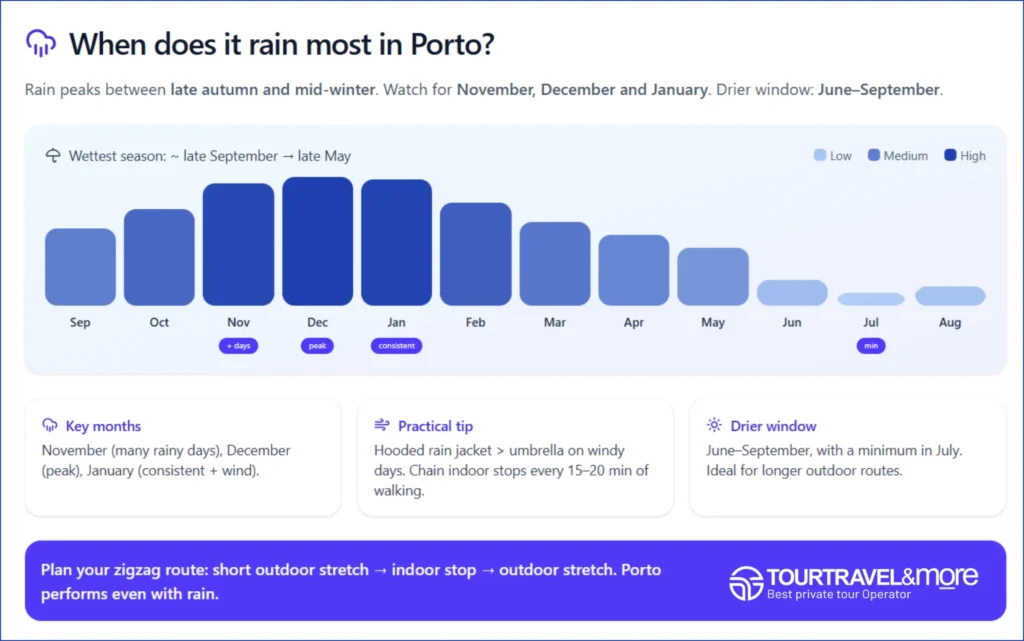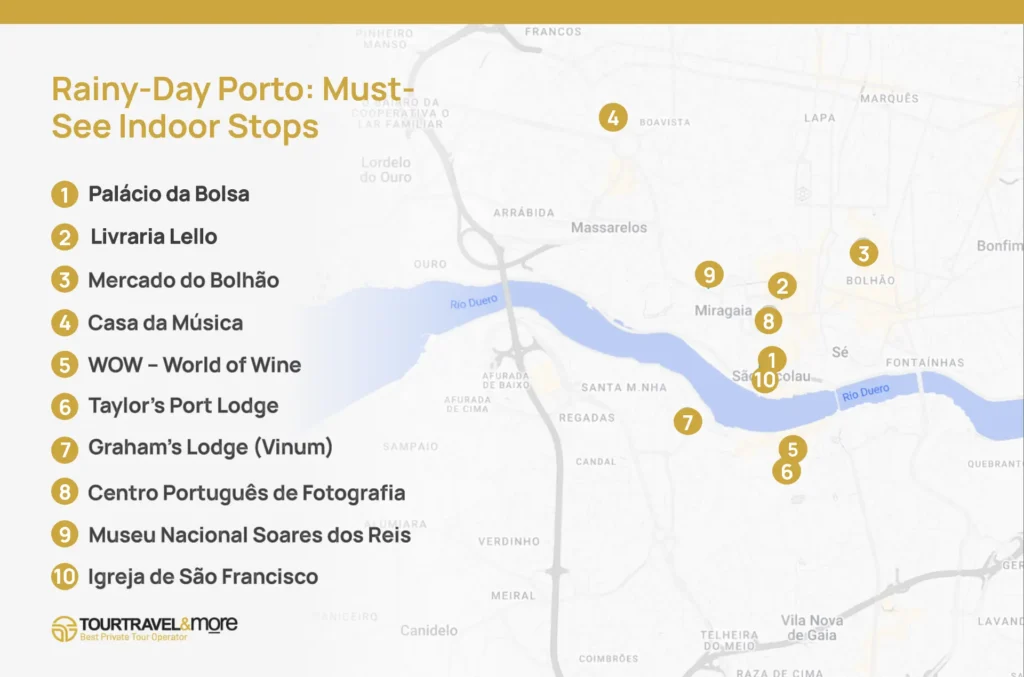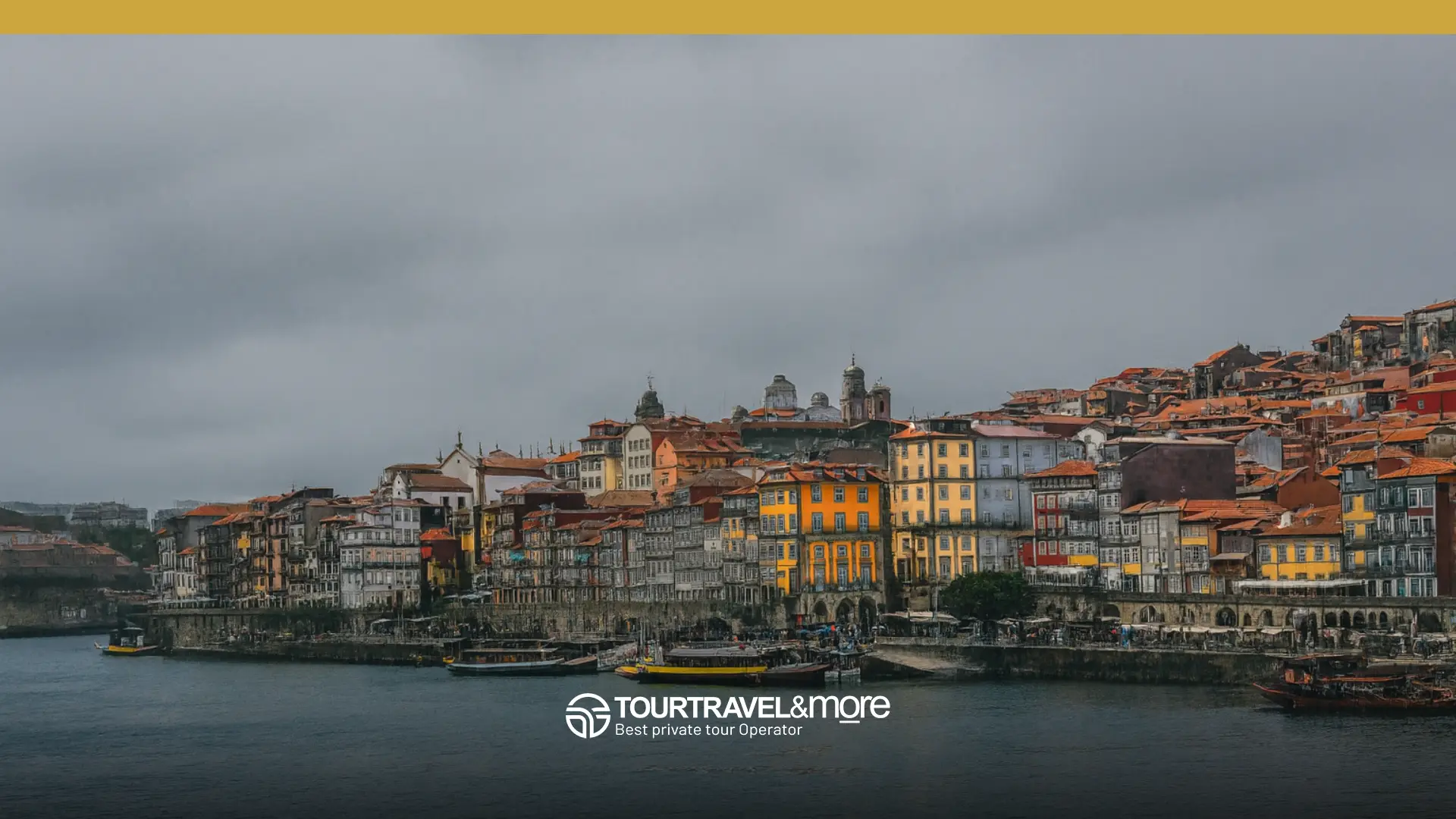Porto has a special charm in the rain. I like to say “Porto gets affectionate with water”: tiled façades gleam, the wine lodges smell of damp wood, and the city slows down in the best way. If you’re planning a trip, the key is knowing when it rains more so you can shape your routes and still have a great time.
Quick take: when it rains most in Porto (and why that can work in your favor)
From late autumn to spring you’ll find the wetter season, with peaks in December, January, and November. From my own trips, December has taken the “medal” for total precipitation, January often brings the highest number of rainy days, and November is the early signal that it’s time to unfold the umbrella. The good news: rain brings fewer crowds, friendlier prices, and a calmer Porto—perfect for lingering in cafés, museums, and wine cellars.
A practical tip that’s worked for me: when the forecast shows showers, I tackle outdoor plans early and keep afternoons for indoor spots. Result: zero drama, all enjoyment.
The annual rain pattern in Porto—no doom, just drizzle
The Atlantic sets the rhythm here, which means shifting clouds and showers that come and go. It’s not an “endless deluge,” but cycles: a short downpour, a patch of blue, another shower. That’s why my winning kit is lightweight: a sturdy compact umbrella, a thin waterproof jacket, and shoes with good grip. With that, Porto doesn’t stop—it simply transforms.
In summer (July and August) the rain takes a holiday; if you want almost no showers and steadier skies, that’s your window. If you don’t mind playing along with the weather, winter gives you a city with more space, atmosphere, and gorgeous photos after each rainfall.

Month by month: when does it rain most?
On my visits, the “rain club” has been led by December and January, with November showing up early to the party. To guide your planning, here’s a quick look at typical rainy days and how to make the most of each wet month:
And as a rough sense of “how much” water I’ve encountered, my personal notes show something like 151 mm in November, 175 mm in December, and 170 mm in January. Don’t treat this as a textbook truth—I use it as a realistic guide to pack my bag and shape the day.
| Month (key) | Rainy days (approx.) | Practical note for travelers |
|---|---|---|
| November | ~15 | Frequent showers. Start early and book afternoons for wine lodges/cafés. |
| December | ~15–16 | “Heavy” feel: cloud cover + steady rain. Wear shoes with solid grip. |
| January | ~17 | Wind + repeated showers. A light waterproof shell beats an umbrella alone. |
Porto in the rain is still a plan: what to do and where to take shelter
When the sky gets lively, the city gives you memorable interiors. My go-tos:
- Wine lodges in Vila Nova de Gaia: guided tastings, history, and warmth. Ideal for a full afternoon if it’s pouring.
- Historic cafés & brunch spots: comfy chairs, pastries, and street views through rainy windows. I call it “contemplative tourism.”
- Stations & tiles: São Bento and its panels are more photogenic when the pavement gleams after rain.
- Museums & culture houses: Serralves, Casa da Música, the Wine Museum. “Under-a-roof” routes that don’t depend on the sky.
When the clouds ease, I stroll along Ribeira and climb to viewpoints: the light contrast between clouds and clearings makes postcard shots.

Which month suits your style?
- Romantic escape: November and December have that cozy café vibe and soft light. Book early dinners and a sunset tasting.
- Foodie trip: Winter is perfect for hearty dishes and quieter wine visits.
- Budget-minded: November to February often means better prices and shorter lines.
- Family trip: January and February work if you plan indoor stops and pack lightweight waterproof layers for everyone.
Once, January went so epic that “Porto looked like Venice for a day.” Exceptional, yes, but it reminded me of a truth: with flexibility and good shoes, the city is just as enjoyable.
Practical tips to enjoy the rain
- Compact umbrella + hooded shell: the duo that has saved me countless times.
- Shoes with grip: fewer slips on wet cobblestone.
- Light layers: interiors are warm; skip overly heavy coats.
- Plan A/B: mornings outdoors, afternoons indoors. If the sky opens, switch plans guilt-free.
- Shelter map: pin cafés, stations, museums, and wine lodges near your routes.
Wrap-up & key takeaways
In Porto the rain hits its highest note in December, keeps the rhythm in January with more rainy days, and kicks off strongly in November. The key is to embrace that Atlantic mood with the right gear and a flexible plan. Rain doesn’t stop Porto—it makes it more intimate. And when the pavement shines, the city looks brand new.



